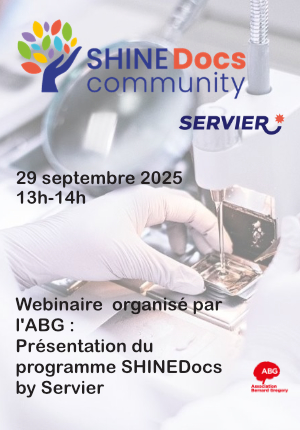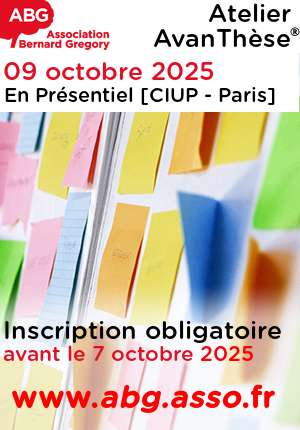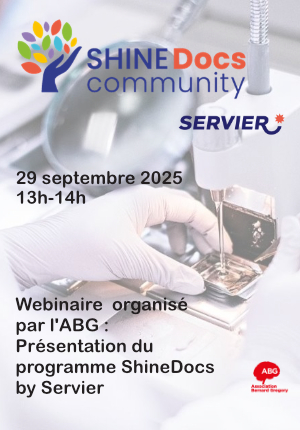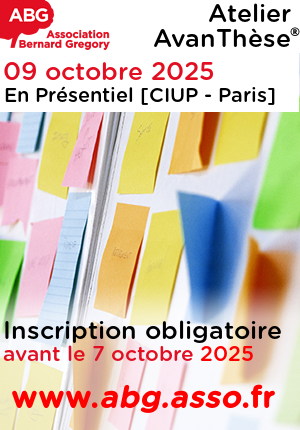Analyse structurale du complexe de réplication du virus de la grippe reconstitué in vitro // Structural analysis of the influenza replication complex reconstituted in vitro
|
ABG-129652
ADUM-63484 |
Thesis topic | |
| 2025-03-18 | Public funding alone (i.e. government, region, European, international organization research grant) |
Université Grenoble Alpes
Grenoble cedex 9 - France
Analyse structurale du complexe de réplication du virus de la grippe reconstitué in vitro // Structural analysis of the influenza replication complex reconstituted in vitro
- Biology
Virus de la grippe, assemblage des RNPs, ARN-polymérase, nucléoprotéine, ARN, cryo-microscopie électronique
Influenza virus, RNPs assembly, RNA polymerase, nucleoprotein, RNA, cryo-electron microscopy
Influenza virus, RNPs assembly, RNA polymerase, nucleoprotein, RNA, cryo-electron microscopy
Topic description
En ce début d'année 2025, l'épidémie de grippe saisonnière a une nouvelle fois démontré l'importance de cet agent pathogène en santé humaine. La cause de la maladie est un virus à ARN négatif segmenté dont le génome est constitué de huit molécules trouvées sous forme de ribonucléoprotéine (RNPs) (1). Les segments d'ARN sont uniformément recouverts par la nucléoprotéine (NP), avec leurs extrémités 5' et 3' liées à l'ARN-polymérase hétérotrimérique, formant ainsi des suprastructures moléculaires en double hélice antiparallèle (2). Les RNPs sont les entités réplicatives autonomes du virus et représentent des cibles idéales dans l'optique de développer de nouvelles solutions thérapeutiques spécifiques. L'équipe a travaillé par le passé sur différents aspects de l'ARN-polymérase (3,4). En parallèle, elle a développé des compétences quant à la maitrise de l'oligomérisation de NP (5) et de son interaction avec l'ARN en vue de la formation de structures hélicoïdales (6,7). En particulier nous avons pu reconstituer des complexes NP-ARN in vitro et obtenir, en collaboration avec l'équipe de Guy Schoehn, la première reconstruction d'une double hélice antiparallèle à résolution atomique pour comprendre le processus d'encapsidation du génome grippal (7).
Le sujet de thèse vise à poursuivre notre étude sur l'assemblage de la RNP du virus de la grippe (influenza). L'objectif est de combiner in vitro l'ensemble des partenaires qui la compose (ARN-polymérase + ARN + NP) afin d'obtenir une RNP minimale dont l'étude structurale sera réalisée par cryo-microscopie électronique. Les deux partenaires protéiques seront séparément produits de façon recombinante et purifiés. Des ARN synthétiques seront conçus et produits pour accommoder séquentiellement les deux partenaires protéiques. Une fois les conditions de l'assemblages établies, l'étude structurale à haute résolution du complexe sera alors réalisée. L'objectif du projet est d'obtenir le premier modèle atomique de l'interaction entre l'ARN polymérase virale et sa nucléoprotéine, médiée par l'ARN. L-e-a doctorant-e sera co-encadré-e par les Drs Thibaut Crépin et Hélène Malet. Ce sujet s'inscrit dans un vaste projet visant à détailler les bases structurales de la réplication du virus de la grippe (influenza). Les données structurales seront confortées par des données cellulaires réalisées par l'entremise de collaborations au niveau national s'inscrivant dans le cadre du réseau français de recherche sur les virus influenza (ResaFLU ; GDR2073).
------------------------------------------------------------------------------------------------------------------------------------------------------------------------
------------------------------------------------------------------------------------------------------------------------------------------------------------------------
At the beginning of 2025, the seasonal flu epidemic has once again highlighted the significance of this pathogen in human health. The disease is caused by a segmented negative RNA virus, whose genome consists of eight molecules organized as ribonucleoproteins (RNPs) (1). The RNA segments are uniformly encapsidated by the nucleoprotein (NP), with their 5' and 3' ends bound to heterotrimeric RNA polymerase, forming antiparallel double helix supra-structures (2). RNPs serve as the autonomous replicative entities of the virus and represent ideal targets for the development of new, specific therapeutic solutions. In the past, our team has explored several structural aspects of the RNA polymerase (3,4). In parallel, we have developed a strong expertise in controlling NP oligomerization (5) and its interaction with RNA to form helical structures (6,7). Notably, we have successfully reconstituted NP-RNA complexes in vitro and, in collaboration with Guy Schoehn's team, obtained the first atomic reconstruction of an antiparallel double helix (7). This reconstruction constitutes the first atomic model to understand the encapsidation process of the influenza genome.
The objective of this thesis is to further investigate the assembly of influenza virus RNP. We aim to combine all the components (RNA polymerase + RNA + NP) in vitro to reconstitute a minimal RNP, which will then be structurally analyzed using cryo-electron microscopy. The two recombinant partners will be produced and purified. Synthetic RNAs will be designed and generated to sequentially accommodate the two protein partners. Once the assembly conditions are established, a high-resolution structural study of the complex will be conducted. The ultimate goal of this project is to obtain the first atomic model of the interaction between viral RNA polymerase and its nucleoprotein, mediated by RNA. The PhD student will be co-supervised by Dr Thibaut Crépin and Dr Hélène Malet. This thesis is part of a vast project that aims at detailing the structural basis of influenza virus replication. The structural data will be validated at the cellular level through national collaborations as part of the French influenza virus research network (ResaFLU; GDR2073).
------------------------------------------------------------------------------------------------------------------------------------------------------------------------
------------------------------------------------------------------------------------------------------------------------------------------------------------------------
Début de la thèse : 01/10/2025
Le sujet de thèse vise à poursuivre notre étude sur l'assemblage de la RNP du virus de la grippe (influenza). L'objectif est de combiner in vitro l'ensemble des partenaires qui la compose (ARN-polymérase + ARN + NP) afin d'obtenir une RNP minimale dont l'étude structurale sera réalisée par cryo-microscopie électronique. Les deux partenaires protéiques seront séparément produits de façon recombinante et purifiés. Des ARN synthétiques seront conçus et produits pour accommoder séquentiellement les deux partenaires protéiques. Une fois les conditions de l'assemblages établies, l'étude structurale à haute résolution du complexe sera alors réalisée. L'objectif du projet est d'obtenir le premier modèle atomique de l'interaction entre l'ARN polymérase virale et sa nucléoprotéine, médiée par l'ARN. L-e-a doctorant-e sera co-encadré-e par les Drs Thibaut Crépin et Hélène Malet. Ce sujet s'inscrit dans un vaste projet visant à détailler les bases structurales de la réplication du virus de la grippe (influenza). Les données structurales seront confortées par des données cellulaires réalisées par l'entremise de collaborations au niveau national s'inscrivant dans le cadre du réseau français de recherche sur les virus influenza (ResaFLU ; GDR2073).
------------------------------------------------------------------------------------------------------------------------------------------------------------------------
------------------------------------------------------------------------------------------------------------------------------------------------------------------------
At the beginning of 2025, the seasonal flu epidemic has once again highlighted the significance of this pathogen in human health. The disease is caused by a segmented negative RNA virus, whose genome consists of eight molecules organized as ribonucleoproteins (RNPs) (1). The RNA segments are uniformly encapsidated by the nucleoprotein (NP), with their 5' and 3' ends bound to heterotrimeric RNA polymerase, forming antiparallel double helix supra-structures (2). RNPs serve as the autonomous replicative entities of the virus and represent ideal targets for the development of new, specific therapeutic solutions. In the past, our team has explored several structural aspects of the RNA polymerase (3,4). In parallel, we have developed a strong expertise in controlling NP oligomerization (5) and its interaction with RNA to form helical structures (6,7). Notably, we have successfully reconstituted NP-RNA complexes in vitro and, in collaboration with Guy Schoehn's team, obtained the first atomic reconstruction of an antiparallel double helix (7). This reconstruction constitutes the first atomic model to understand the encapsidation process of the influenza genome.
The objective of this thesis is to further investigate the assembly of influenza virus RNP. We aim to combine all the components (RNA polymerase + RNA + NP) in vitro to reconstitute a minimal RNP, which will then be structurally analyzed using cryo-electron microscopy. The two recombinant partners will be produced and purified. Synthetic RNAs will be designed and generated to sequentially accommodate the two protein partners. Once the assembly conditions are established, a high-resolution structural study of the complex will be conducted. The ultimate goal of this project is to obtain the first atomic model of the interaction between viral RNA polymerase and its nucleoprotein, mediated by RNA. The PhD student will be co-supervised by Dr Thibaut Crépin and Dr Hélène Malet. This thesis is part of a vast project that aims at detailing the structural basis of influenza virus replication. The structural data will be validated at the cellular level through national collaborations as part of the French influenza virus research network (ResaFLU; GDR2073).
------------------------------------------------------------------------------------------------------------------------------------------------------------------------
------------------------------------------------------------------------------------------------------------------------------------------------------------------------
Début de la thèse : 01/10/2025
Funding category
Public funding alone (i.e. government, region, European, international organization research grant)
Funding further details
Concours pour contrat doctoral
Presentation of host institution and host laboratory
Université Grenoble Alpes
Institution awarding doctoral degree
Université Grenoble Alpes
Graduate school
218 CSV- Chimie et Sciences du Vivant
Candidate's profile
Le-a candidat-e devra posséder une solide expérience en biochimie des protéines et de l'ARN, ainsi que de bonnes connaissances en microscopie électronique.
Nous cherchons avant tout un-e étudiant-e motivé-e, avide d'apprendre et de travailler de façon rigoureuse aussi bien sur les aspects d'expériences au laboratoire (expression, purification, analyse biophysiques, tests d'activité), sur les aspects de collectes de données au microscope électronique (particules isolées ou tomographie) et sur le traitement d'images de cryo-ME et cryo-ET (utilisation de logiciels spécifiques sous linux, mise en place de nouvelles stratégies de traitement d'images en cryo-ET).
The candidate should have a strong background in both protein and RNA biochemistry with good knowledge in electron microscopy. We are looking for a motivated student, eager to learn and to work in a rigorous way on the aspects of laboratory experiments (expression, purification, biophysical analysis, activity tests), on the aspects of electron microscope data collection (single-particle cryo-EM or cryo-ET) and on image processing (use of specific software under linux, implementation of new image processing strategies in cryo-ET).
The candidate should have a strong background in both protein and RNA biochemistry with good knowledge in electron microscopy. We are looking for a motivated student, eager to learn and to work in a rigorous way on the aspects of laboratory experiments (expression, purification, biophysical analysis, activity tests), on the aspects of electron microscope data collection (single-particle cryo-EM or cryo-ET) and on image processing (use of specific software under linux, implementation of new image processing strategies in cryo-ET).
2028-09-30
Apply
Close
Vous avez déjà un compte ?
Nouvel utilisateur ?
More information about ABG?
Get ABG’s monthly newsletters including news, job offers, grants & fellowships and a selection of relevant events…
Discover our members
 ONERA - The French Aerospace Lab
ONERA - The French Aerospace Lab  Laboratoire National de Métrologie et d'Essais - LNE
Laboratoire National de Métrologie et d'Essais - LNE  MabDesign
MabDesign  SUEZ
SUEZ  Ifremer
Ifremer  MabDesign
MabDesign  Aérocentre, Pôle d'excellence régional
Aérocentre, Pôle d'excellence régional 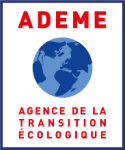 ADEME
ADEME 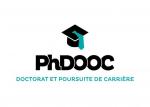 PhDOOC
PhDOOC  Généthon
Généthon  Nokia Bell Labs France
Nokia Bell Labs France  CESI
CESI  TotalEnergies
TotalEnergies  Institut Sup'biotech de Paris
Institut Sup'biotech de Paris 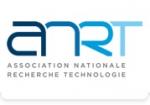 ANRT
ANRT  ASNR - Autorité de sûreté nucléaire et de radioprotection - Siège
ASNR - Autorité de sûreté nucléaire et de radioprotection - Siège  Tecknowmetrix
Tecknowmetrix  CASDEN
CASDEN  Groupe AFNOR - Association française de normalisation
Groupe AFNOR - Association française de normalisation

